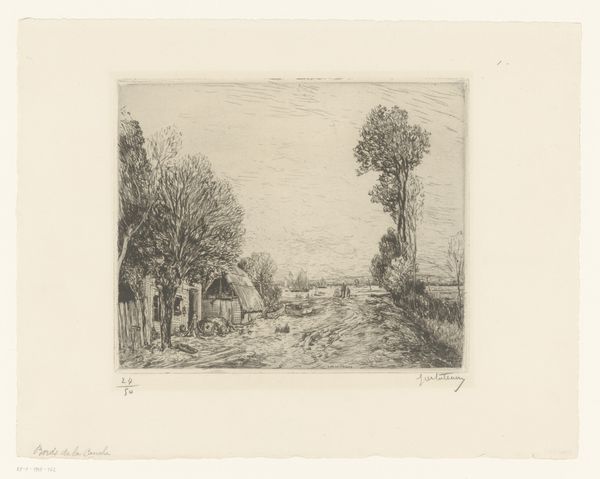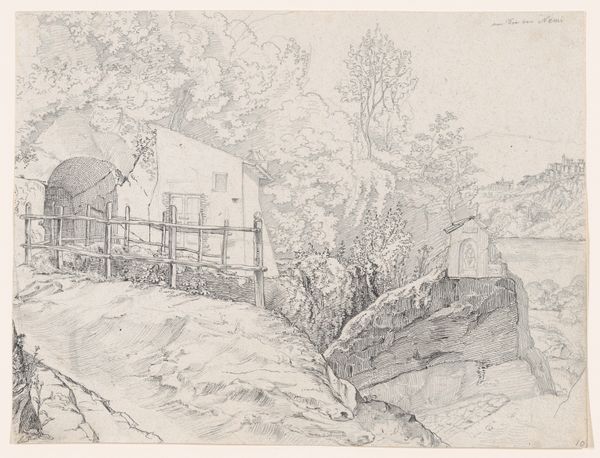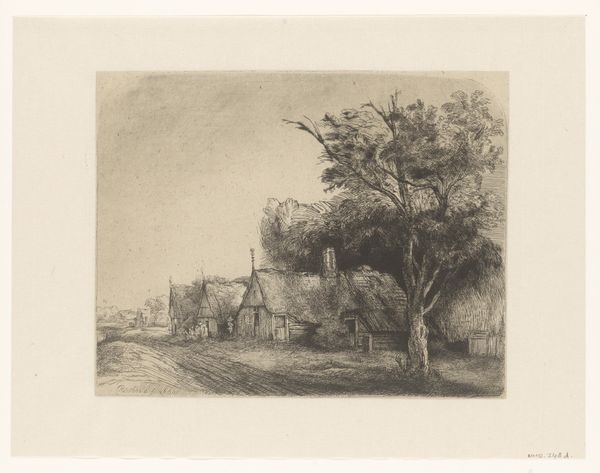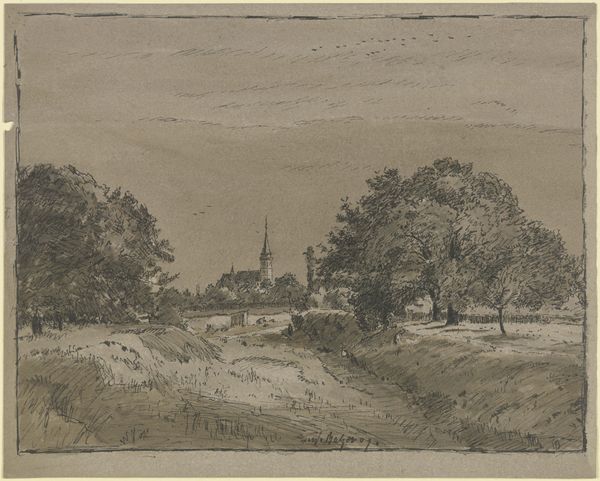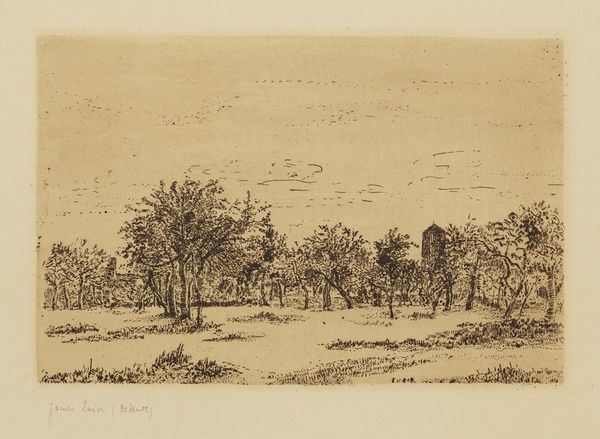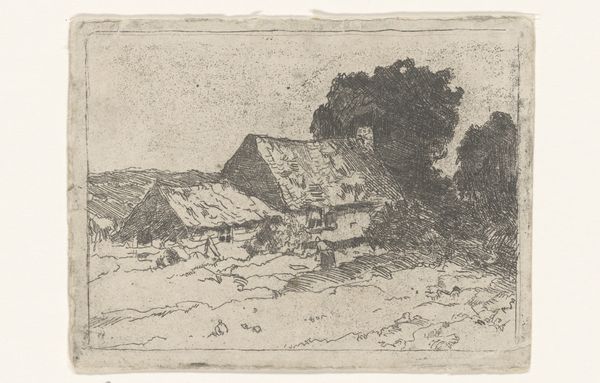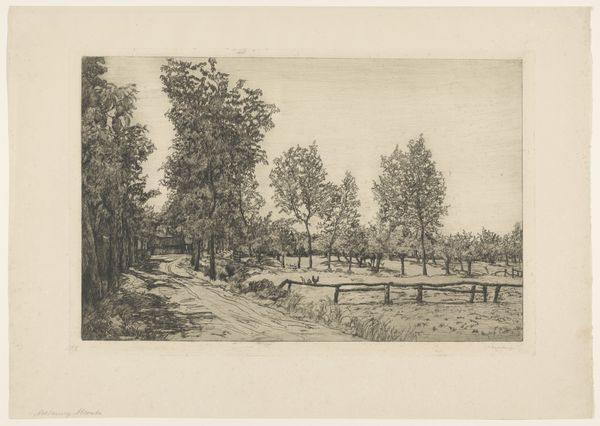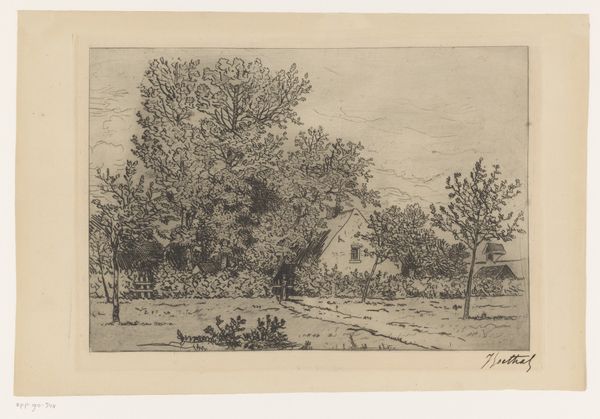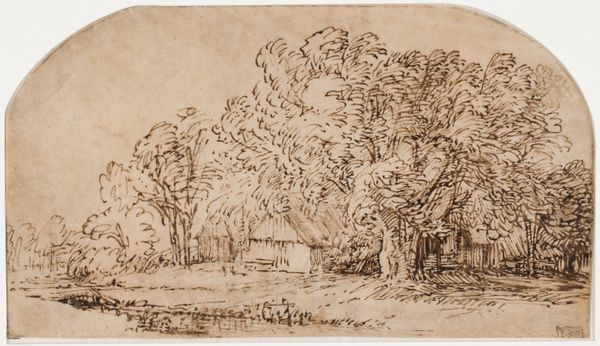
drawing, print, etching, ink
#
drawing
#
ink drawing
#
pen drawing
# print
#
etching
#
landscape
#
ink
#
romanticism
#
line
#
realism
Copyright: National Gallery of Art: CC0 1.0
Curator: Here we have "Road with a Farmhouse on the Right," an etching by John Crome, created in 1806. Editor: It's a very delicate, almost ephemeral scene. The light seems to just skim the surface. Curator: Crome, deeply involved with the Norwich School of painters, shows a distinct preoccupation with rendering the textural qualities of the English countryside through etching. Note the expressive use of line, almost a frenetic energy, particularly in the trees. Editor: Yes, and if you look closely, you can discern the varying weights of the lines used. What I find compelling is his process. The choice to work with etching emphasizes the labour involved. Acid biting into metal. These weren't mass-produced prints; it was a craft. Curator: Precisely. Etching allows for a replication of detail challenging other reproductive techniques, yet there remains a vital link to mark-making in drawing. Consider how the tonal variations achieved through line density evoke the subtleties of light. Semiotically, each line contributes to our understanding of the scene, functioning almost as an ideogram. Editor: The human presence feels integrated into the environment. He doesn’t ennoble labor; it's merely another aspect of the landscape, alongside the trees and farmhouse, almost disappearing. The wheels next to the wall of the farm, leaning with a natural sense of balance, tell a story. It highlights how dependent the local economy would have been on crafts, which were made by people like Crome too. Curator: That prompts a question on the structural elements, like the rhythmic repetition of vertical lines in the fence. It acts as a visual bridge leading into the depth of the composition, echoed in the trees and the building itself. He guides our eye through an unfolding scene. Editor: It’s interesting to consider the material accessibility, both in its creation and distribution. Etchings like these offered more people access to art, compared to commissioned oil paintings displayed in wealthy estates. This potentially shaped broader cultural perceptions of rural life. Curator: I am thinking about how these stark formal choices, the line and the scene they carve out on the plate, speak eloquently to Crome’s intent of encapsulating the sublime through structure and natural composition. Editor: I’ve been too caught up by the craft of etching and its connection to a time that's slipping from view. Let's pause here and give the listener room to ponder, too.
Comments
No comments
Be the first to comment and join the conversation on the ultimate creative platform.

